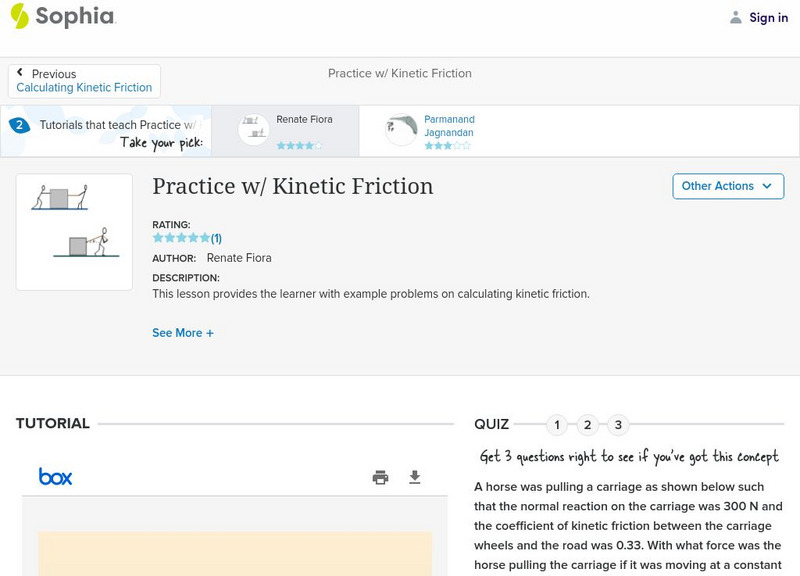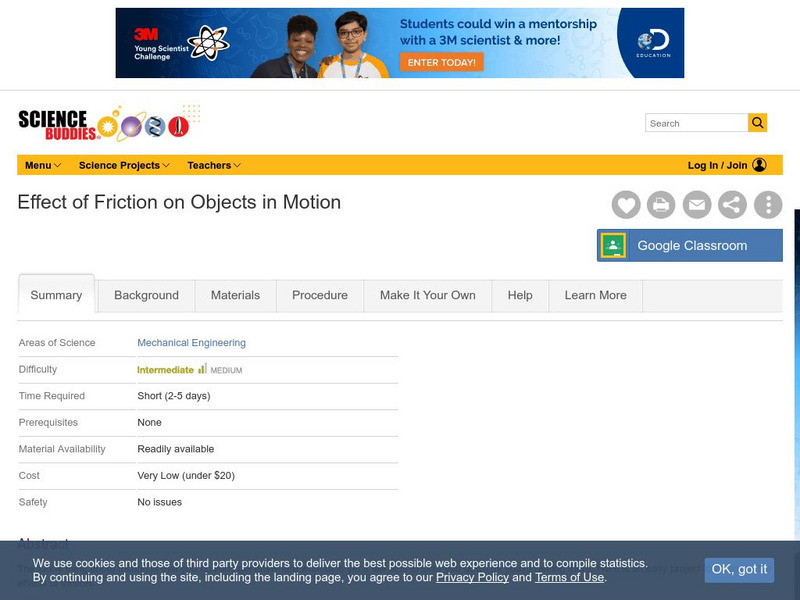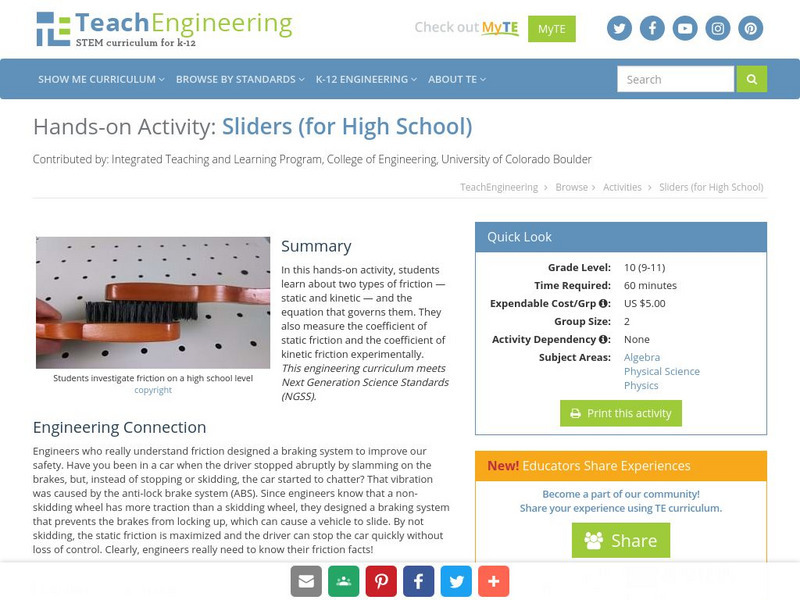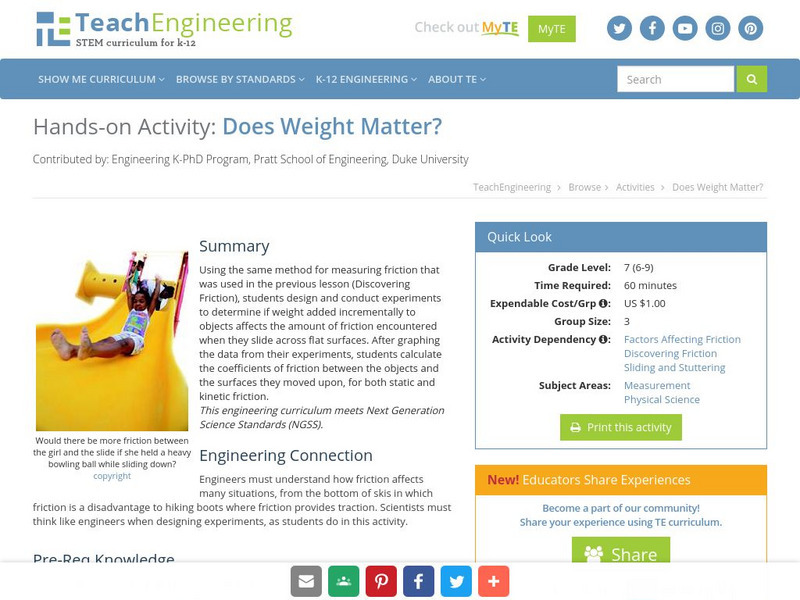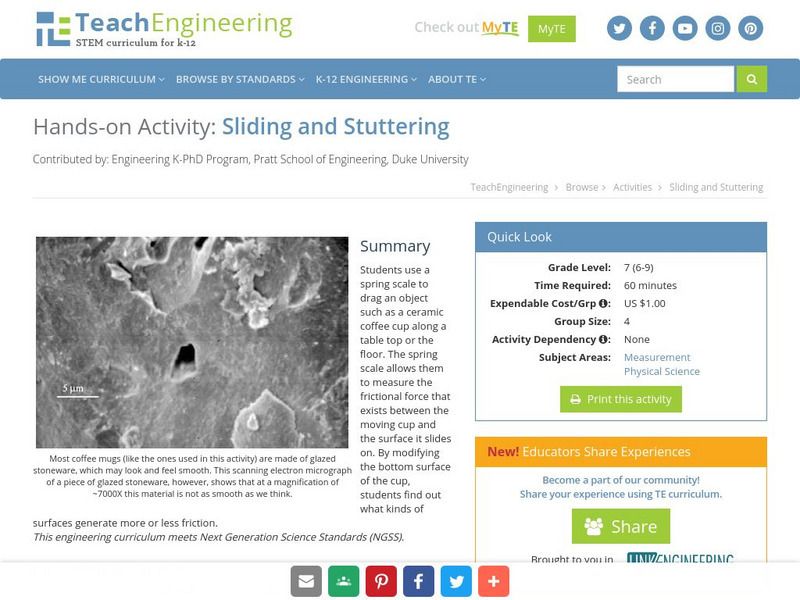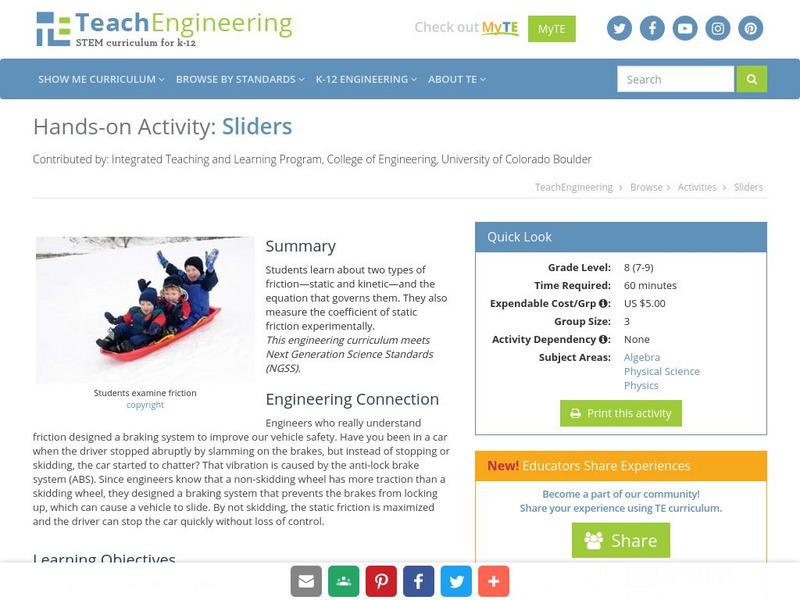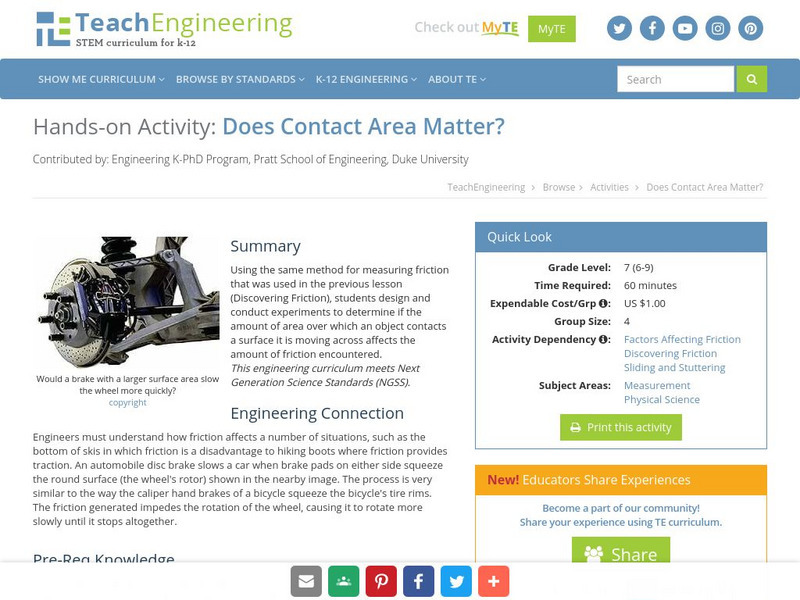Sophia Learning
Sophia: Kinetic Friction & Vectors: Lesson 1
This lesson explains why kinetic friction is not represented using a vector equation. It is 1 of 2 in the series titled "Kinetic Friction & Vectors."
Sophia Learning
Sophia: Mathematical Interpretation of Kinetic Friction: Lesson 2
This lesson gives a mathematical interpretation of kinetic friction. It is 2 of 2 in the series titled "Mathematical Interpretation of Kinetic Friction."
Sophia Learning
Sophia: Practice W/ Kinetic Friction: Lesson 2
This lesson provides the learner with example problems on calculating kinetic friction. It is 2 of 2 in the series titled "Practice w/ Kinetic Friction."
Sophia Learning
Sophia: Practice W/ Kinetic Friction: Lesson 1
This lesson provides the learner with example problems on calculating kinetic friction. It is 1 of 2 in the series titled "Practice w/ Kinetic Friction."
Sophia Learning
Sophia: Calculating Kinetic Friction: Lesson 2
This lesson demonstrates how to make calculations using kinetic friction. It is 2 of 2 in the series titled "Calculating Kinetic Friction."
Sophia Learning
Sophia: Common Coefficients of Kinetic Friction: Lesson 2
This lesson provides the learner with the coefficients of kinetic friction for some common surfaces. It is 2 of 2 in the series titled "Common Coefficients of Kinetic Friction."
Sophia Learning
Sophia: Kinetic Friction & Normal Forces: Lesson 1
This lesson explains why kinetic friction depends on normal forces. It is 1 of 2 in the series titled "Kinetic Friction & Normal Forces."
Sophia Learning
Sophia: Kinetic Friction & Surface Area: Lesson 1
This lesson explains why kinetic friction does not depend on the contact surface area between an object and the surface that object is sliding across. It is 1 of 2 in the series titled "Kinetic Friction & Surface Area."
Science Museum of Minnesota
Science Museum of Minnesota: Thinking Fountain: Friction
The Thinking Fountain provides this simple experiment for understanding friction and it relationship to energy.
Science Buddies
Science Buddies: Paper Roller Coasters: Kinetic and Potential Energy
In this lesson, your students will learn about kinetic and potential energy as they build their own roller coasters from simple classroom materials.
Physics Aviary
Physics Aviary: Practice Problems: Newton's Law System Both Frictions Problem
Students must find out different things for a series of object's moving as a system with Friction. In this problem students will be given both a static friction coefficient and a kinetic friction coefficient.
Science Buddies
Science Buddies: Effect of Friction on Objects in Motion
The funny thing about friction is that you couldn't get anywhere without it, yet it still acts to slow you down as you're getting there. Here is an easy project to measure the effects of friction.
TeachEngineering
Teach Engineering: Imagine Life Without Friction
Students are introduced to the concept of inertia and its application to a world without the force of friction acting on moving objects. When an object is in motion, friction tends to be the force that acts on this object to slow it down...
Texas Education Agency
Texas Gateway: Glossary for Newton's Laws: Friction, Drag, and Elasticity
This is a glossary of terms and definitions used in Chapter 5: Further Applications of Newton's Laws: Friction, Drag, and Elasticity from the AP Physics online text.
TeachEngineering
Teach Engineering: Factors Affecting Friction
In this instructional activity, students use previous knowledge about friction to formulate hypotheses concerning the effects of weight and contact area on the amount of friction between two surfaces. In the Associated Activities (Does...
TeachEngineering
Teach Engineering: Sliders (For High School)
In this hands-on activity, students learn about two types of friction - static and kinetic - and the equation that governs them. They also measure the coefficient of static friction and the coefficient of kinetic friction experimentally.
CK-12 Foundation
Ck 12: Physics Simulation: Sprinter
[Free Registration/Login Required] Learn about static friction, kinetic friction, and slipping in the context of human motion using this interactive simulation. A PDF worksheet and a video tutorial are also available. [3:38]
TeachEngineering
Teach Engineering: Does Weight Matter?
Using the same method for measuring friction that was used in the previous lesson (Discovering Friction), students design and conduct an experiment to determine if weight added incrementally to an object affects the amount of friction...
CK-12 Foundation
Ck 12 Exploration Series: Simulations: Physics: Malt Shop
[Free Registration/Login Required] Learn about kinetic friction and how objects slide to a stop under the influence of friction.
Science4Fun
Science4 Fun: What Is Friction
What is friction? Illustrated discussion of friction including the three types, its importance, and why it is avoided.
TeachEngineering
Teach Engineering: Sliding and Stuttering
Students use a spring scale to drag an object such as a ceramic coffee cup along a table top or the floor. The spring scale allows them to measure the frictional force that exists between the moving cup and the surface it slides on. By...
TeachEngineering
Teach Engineering: Energy of Motion
By taking a look at the energy of motion all around us, students learn about the types of energy and their characteristics. They first learn about the two simplest forms of mechanical energy: kinetic and potential energy, as illustrated...
TeachEngineering
Teach Engineering: Sliders
In this hands-on activity, students learn about two types of friction - static and kinetic - and the equation that governs them. They also measure the coefficient of static friction experimentally.
TeachEngineering
Teach Engineering: Does Contact Area Matter?
Using the same method for measuring friction that was used in the previous lesson (Discovering Friction), students design and conduct an experiment to determine if the amount of area over which an object contacts a surface it is moving...


